30 Mobile eCommerce Statistics for 2025

Our smartphones have become indispensable in daily tasks.
From buying groceries to booking a flight, all these are swiftly done with just a few swipes on mobile devices.
Curious about the state of mobile ecommerce? Look no further. I have curated all mobile ecommerce statistics to help you understand the market.
Top mobile eCommerce statistics
You’re sitting on your couch, scrolling through TikTok app, when something catches your eye. One tap later, it’s ordered and on its way. This isn’t just convenient—it’s how we’re all shopping now.
Let’s peek into what the numbers tell us about where we’re heading in mobile eCommerce.
Global market size and growth
1. In 2025, we will see $2.51 trillion in mobile sales. (Oberlo)
2. By 2027, we’ll be breaking the $3 trillion ceiling. (Oberlo)
3. Mobile commerce is set to dominate 63% of all online shopping by 2028, showing we’re just scratching the surface. (Statista)
4. By 2028, global online retail sales will grow at an 8.9% CAGR. It will reach $6.8 trillion, with mobile devices playing a central role in this expansion. (Forrester)
5. Retail e-commerce will reach $6.8 trillion by 2028, with mobile driving 80% of traffic and 65% of transactions. (Forrester)
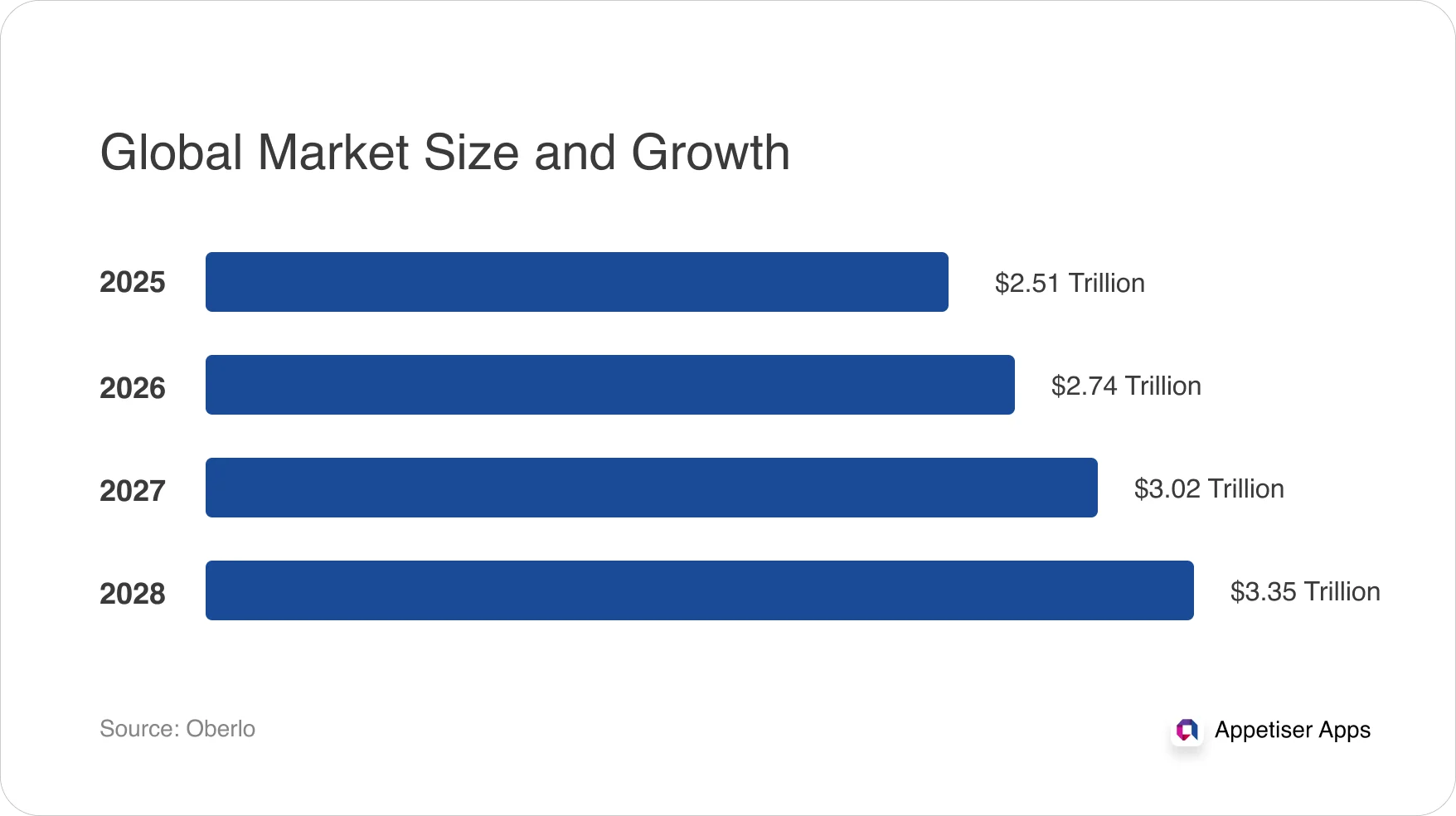
![]()
Consumer behavior and usage
6. Nearly 80% of all online store visits happen on phones, with 66% of orders coming through mobile devices. (Statista)
7. Weekly mobile shopping is the norm for 30% of online shoppers globally. (Statista)
8.. 4.88 billion smartphone users (and counting) are driving this revolution. (Prioridata)
9. Americans spend 4 hours and 39 minutes daily on their phones. (Statista)
10. The gap between desktop ($155.75 average order) and mobile ($112 average order) purchases is expected to narrow as mobile checkout experiences improve. (Statista)
![]()
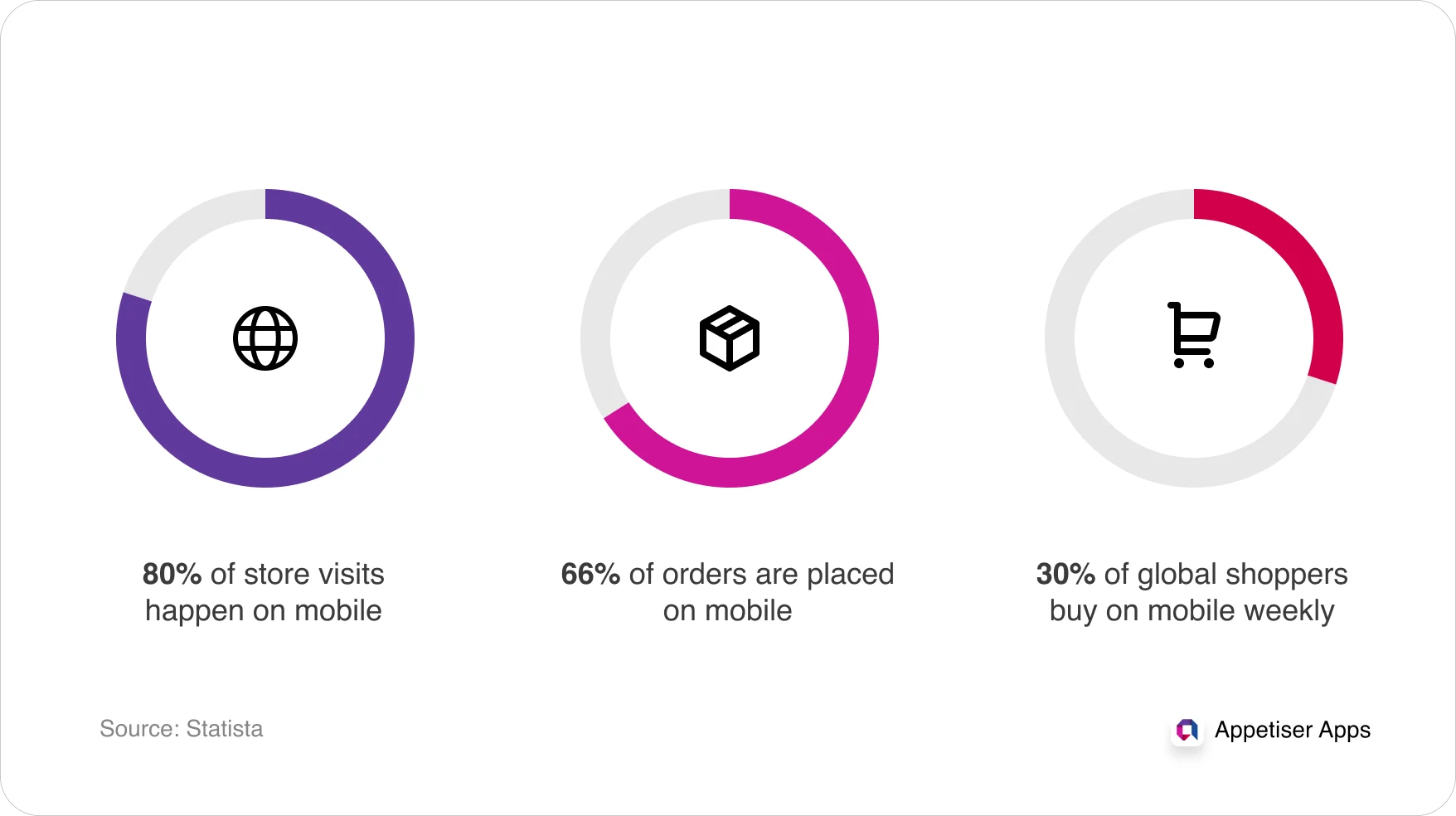
Regional insights on mobile ecommerce
United States
11. Traffic dominance: Smartphones drove 77% of retail site visits and 68% of online orders in Q3 2024, a 20% YoY increase in mobile shopping adoption. (Statista)
12. App preference: Amazon and SHEIN led with 35+ million and 27+ million app downloads, respectively, in 2022, though 80% of customer service teams plan to abandon native apps by 2025 for messaging platforms. (SensorTower)
13. Social commerce in the US jumped from $37 billion in 2021 to nearly $80 billion. (McKinsey)
14. By 2025, we’ll see more than 100 million Americans scanning QR codes with their phones. (Statista)
![]()
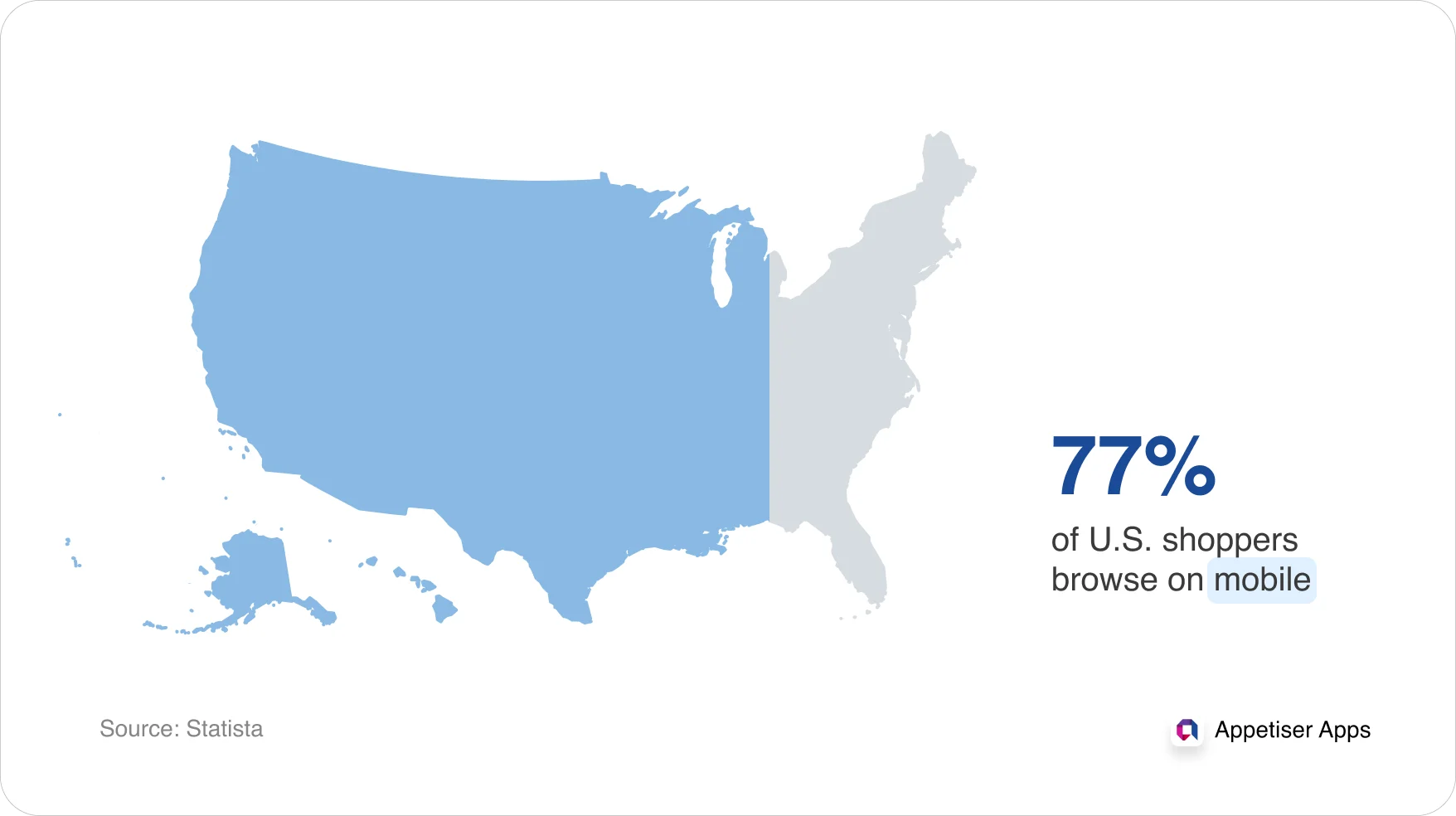
Europe
15. Quick commerce surge: In 2025, it’s expected to reach US$12.60 billion. Europe’s rapid-delivery market will grow at a 7.05% CAGR (2025–2029), reaching $16.54 billion GMV by 2029. (Statista)
16. Latest forecast reveals a 7.8% annual growth rocket for online sales across Europe-5 (France, Germany, Italy, Spain, UK), blasting from €389 billion in 2024 to €565 billion by 2029.8. (Forrester)
17. By 2029, nearly 1 in 3 retail pounds (32%) will flow through online channels in the UK—a 19% surge from 2024’s 27%. While Germany and France play catch-up, Britain’s e-commerce dominance isn’t just growth—it’s a marketwide reset. (Forrester)
![]()
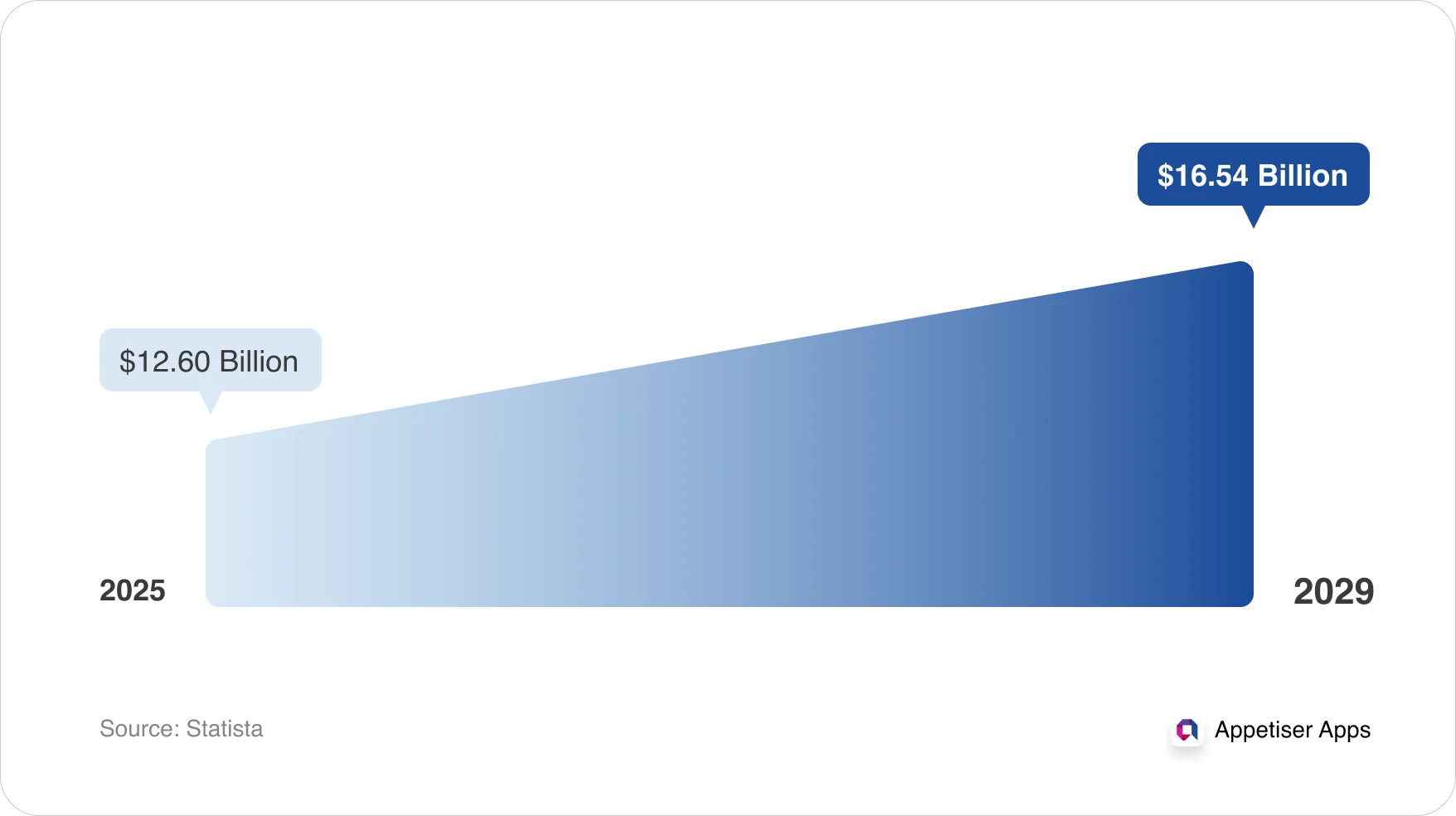
Australia
18. 95% of Australians now shop via smartphones, with Gen X (99%) and Millennials (97%) leading adoption. Desktop remains relevant for Boomers (79%) and research-heavy purchases. (InsideRetail)
19. When it comes to digital commerce, transaction value will hit US$57.65 billion in 2025 (6.53% CAGR), driven by mobile-first behaviors. (Statista)
20. 57% of consumers expect same-day collection options for online purchases, while 77% want real-time order tracking. (eCommerce News Australia)
21. 44% abandon carts if delivery exceeds 2 days, while 57% demand same-day collection options. (SOTI).

![]()
Emerging trends in mobile commerce
Social commerce
22. By 2025, global social commerce will exceed $2 trillion. (McKinsey)
23. US and European shoppers see live commerce as entertainment (42% and 38%, respectively, call it “fun”). (McKinsey)
24. Social platforms like Pinterest, TikTok, YouTube, and Amazon are all racing to capture this market. (McKinsey)
Payment and financial technology
25. BNPL (Buy Now, Pay Later) in the U.S. market is projected to reach $122.26 billion in 2025. (Global Newswire)
26. 55% of Gen Z made purchases via social media apps in 2024, with TikTok cited as the #2 platform (after Instagram) for Gen Z shopping. (GoDaddy)
Future technology adoption
27. By 2025, 75% of SaaS providers will adopt product-led growth (PLG), leveraging self-service mobile experiences to shorten sales cycles and reduce acquisition costs. (Gartner)
28. 2028’s forecast? A whopping $3.35 trillion, with mobile claiming 63% of all online shopping. (Oberlo)
29. By 2028, more than $3 of every $5 spent online will happen through mobile. (Oberlo)
30. Mobile commerce is set to hit a massive $2.9 trillion globally in 2025. (OctalSoftware)
![]()
Buy Now, Pay Later hits $122 billion in 2025 as Gen Z rejects credit cards, opting for installment plans on 51% of beauty or fashion buys. This shift demands the seamless addition of BNPL options to social checkout flows, particularly for TikTok’s #2 shopping rank among youth. Financial apps must gamify repayment tracking to retain 73% of users prioritizing debt-free spending.
What’s even more interesting is that 75% of SaaS firms will adopt product-led growth by 2025, leveraging self-service mobile experiences to slash acquisition costs by 30%.
With mobile claiming 63% of online sales by 2028, apps need AI-powered onboarding that converts in 3 taps or less. Prioritize 5G-optimized and bite sized content—users now spend 88% longer on mobile tutorials versus desktop.
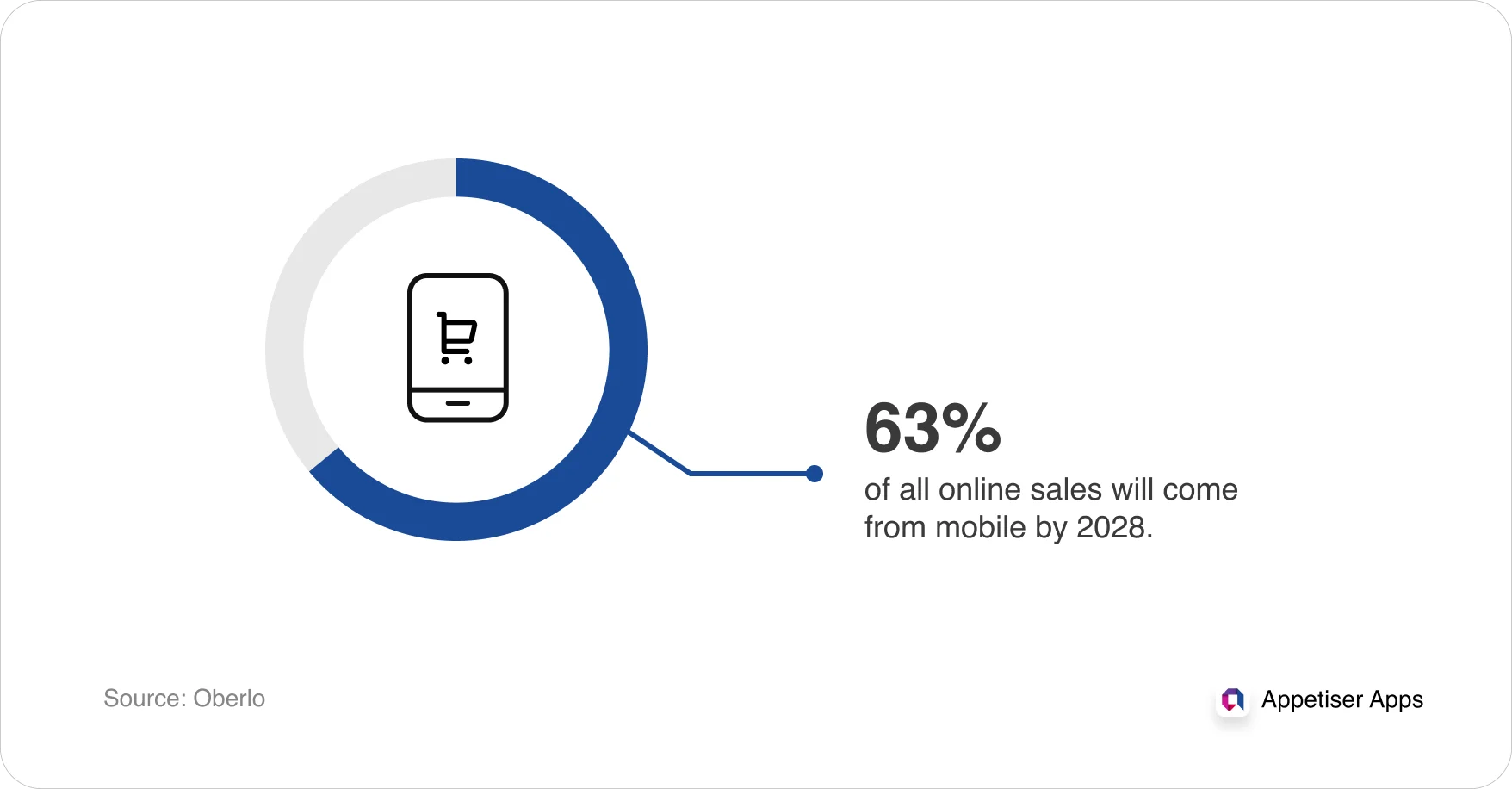
People also ask about the e-commerce market
How much will global mobile commerce sales reach by 2025?
Projections show mobile commerce sales hitting $2.51 trillion in 2025, driven by mobile shopping apps and mobile web convenient interfaces.
What percentage of online sales come from mobile devices?
By 2028, mobile devices will account for 63% of all online shopping, with 80% of website traffic originating from smartphone users.
Why do mobile shoppers abandon carts on mobile sites?
44% of mobile shoppers abandon carts if delivery exceeds 2 days, emphasizing the need for mobile optimization and faster fulfillment to boost conversion rates.
Which regions lead in mobile commerce statistics adoption?
The Asia Pacific region dominates growth, while the U.S. sees 77% of retail site visits from mobile phones. Europe’s retail mcommerce sales will hit €565 billion by 2029.
How does social commerce impact retail ecommerce sales?
Platforms like TikTok and Instagram drive 55% of Gen Z’s online purchases, contributing to a projected $2 trillion social commerce market by 2025.
Final thoughts
The mobile ecommerce statistics for 2025 reveal a paradigm shift: mobile shoppers now dictate market dynamics, with mobile traffic driving 80% of visits but only 65% of transactions—exposing untapped UX opportunities.
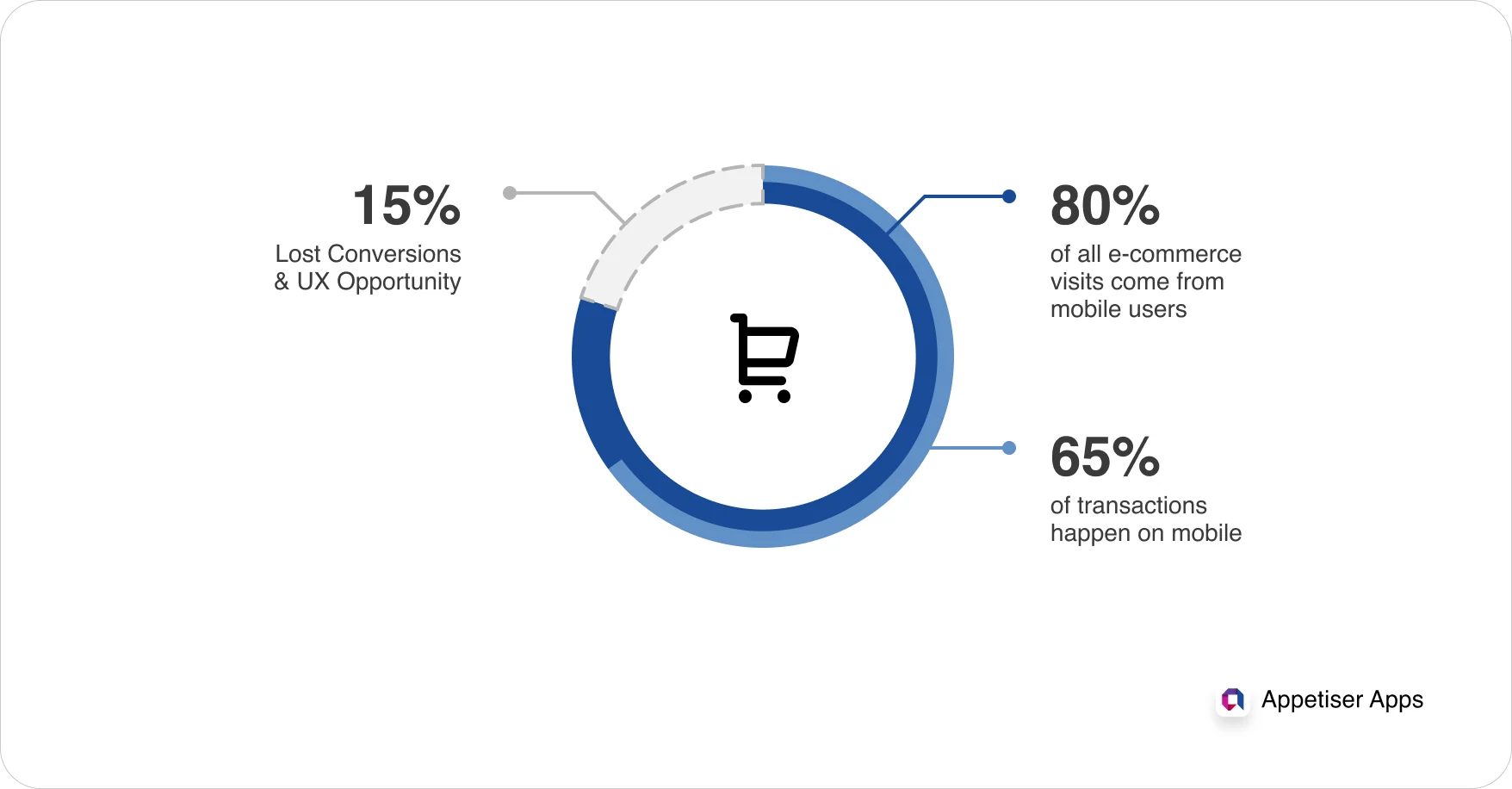
Retail ecommerce sales will surge to $6.8 trillion by 2028, fueled by mobile apps, digital wallets like Google Pay and Apple Pay, and BNPL adoption hitting $122B in the U.S.
Key battlegrounds include the Asia Pacific region’s growth surge and Australia’s 95% mobile shopping penetration. Brands must prioritize mobile-friendly designs, push notifications, and 5G-optimized experiences to capture more visitors and bridge the mobile vs. desktop users conversion gap.
As social platforms evolve into $2 trillion storefronts, integrating live commerce and shoppable AR will be critical to engaging consumers who increasingly prefer shopping in-store convenience via mobile web.
The future is clear: mobile commerce isn’t just about making online purchases—it’s about redefining retail through mobile-first strategies that align with nearly half of global internet users now shopping on mobile phones.
Whether you’re looking to develop eCommerce app or simply get to market quickly, our team has the expertise and experience to get you there.
Contact us today for a free consultation to get a clear direction for your app idea.

Maria Krisette Lim is a Content Marketing Specialist with 14 years of experience producing web and print ad content. Krisette has a BSBA degree, major in Business Management and Entrepreneurship. When she’s not tinkering with words and punctuation, she’s either curled up with a book while sipping hot tea, playing with her toddler, or tinkering with website builders.


